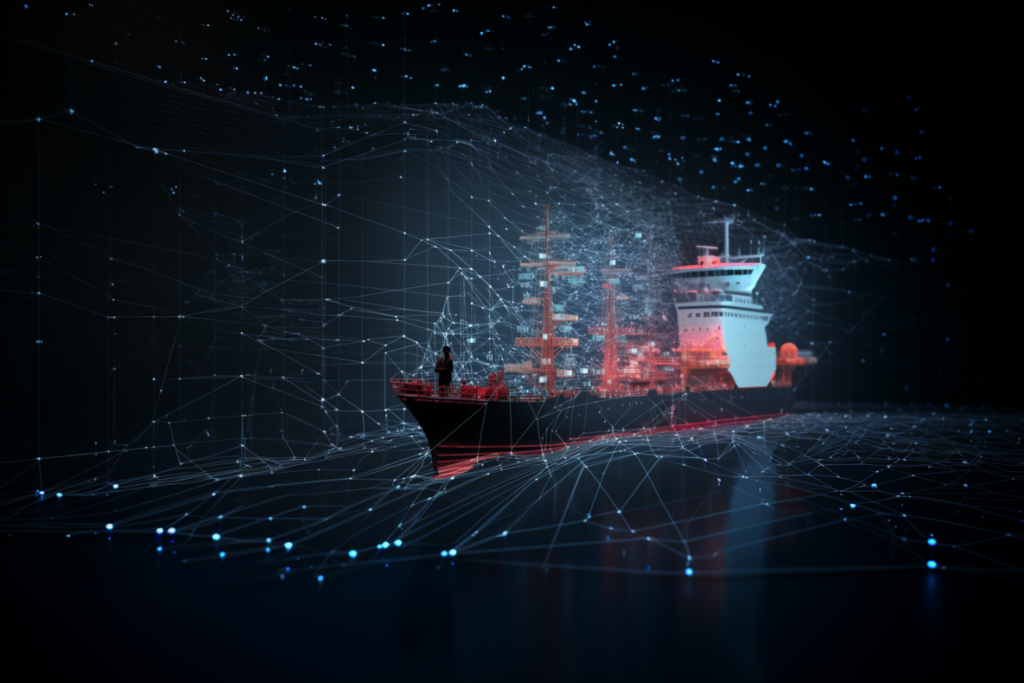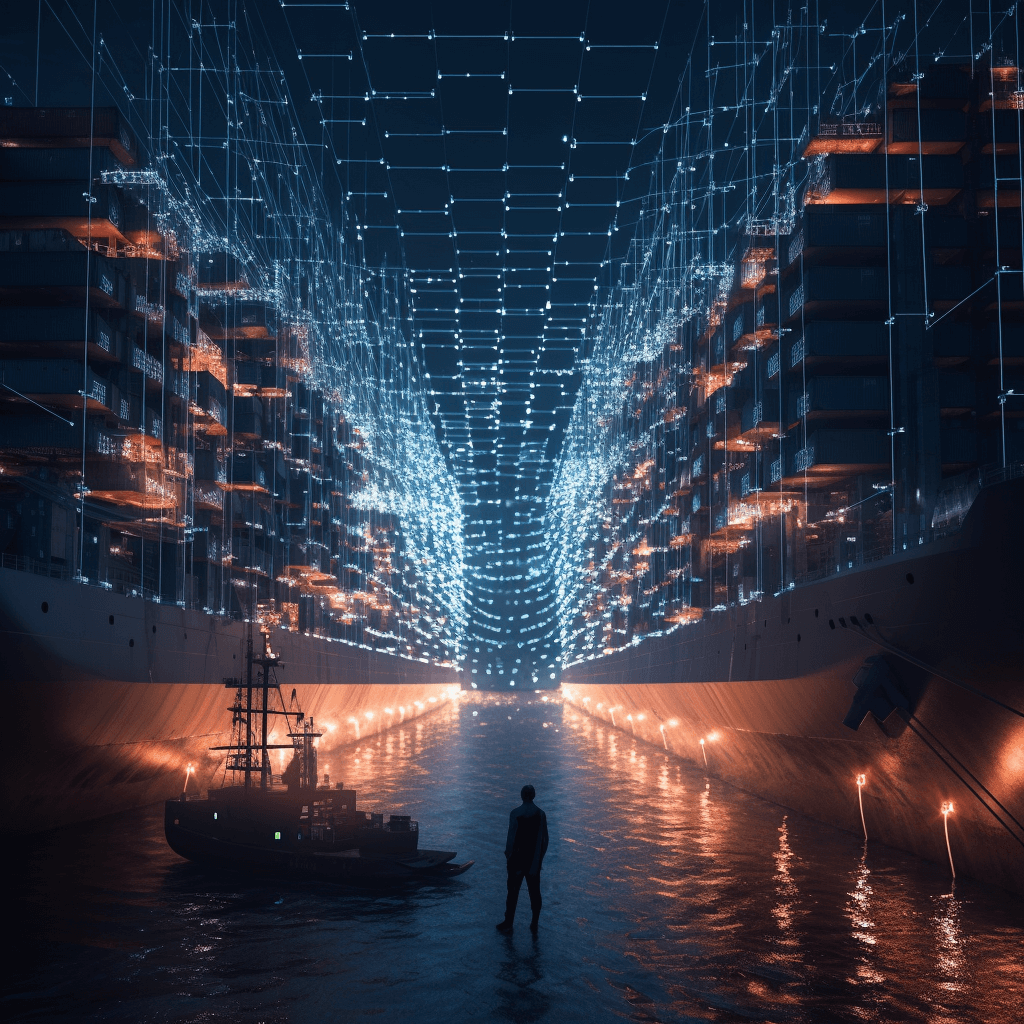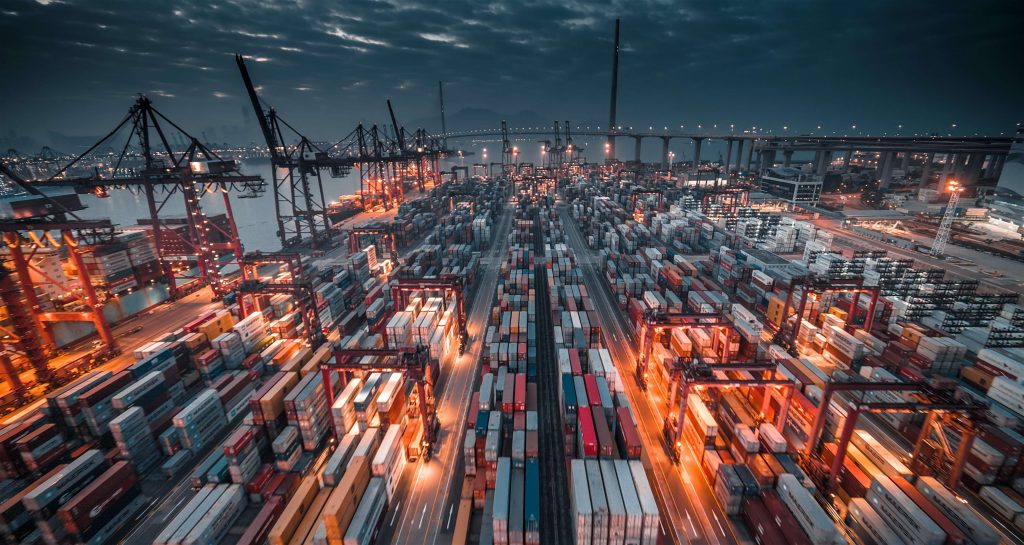Join our Mailing List to hear more!
Join the mailing list to hear updates about the world or data science and exciting projects we are working on in machine learning, net zero and beyond.

In today’s data-driven world, statistical models have become the backbone of decision-making across various industries. From predicting stock market trends to understanding customer behavior in retail, these models provide insights that were previously unimaginable. One sector where the potential of statistical modeling is just beginning to be tapped into is the maritime industry. As a cornerstone of global trade and transportation, the maritime sector is responsible for the movement of over 80% of the world’s goods by volume. Given its significance, any enhancement in efficiency, safety, or sustainability can have profound impacts on global economies and environments.
But why are we talking about complex statistical models in the context of the maritime sector? The answer lies in the intricate and multifaceted nature of maritime operations. With variables ranging from ocean currents and weather patterns to geopolitical situations and cargo demands, simple models often fall short in capturing the full picture. Complex statistical models, on the other hand, have the capacity to weave these myriad factors together, offering predictions and insights that can revolutionize maritime operations.
In this blog post, we will delve into the world of complex statistical models, understand their importance, and explore some fascinating applications within the maritime sector. Whether you’re a maritime professional, a data enthusiast, or just someone curious about the intersection of data and shipping, this post promises a deep dive into uncharted waters.

Statistical models are mathematical representations of real-world phenomena. They help us understand, predict, and optimize various outcomes by analyzing data. While some models are straightforward and linear, others are intricate, capturing the nuances and multifaceted relationships in the data. These latter ones are what we term as “complex statistical models.”
Definition and Characteristics:
At its core, a complex statistical model is designed to capture intricate patterns and relationships in data that simpler models might overlook. These models often involve multiple variables, non-linear relationships, and sometimes even feedback loops where one variable can influence another in a cyclical manner.
Characteristics of complex statistical models include:
Difference between Simple and Complex Statistical Models:
To understand the distinction better, consider the example of predicting a ship’s fuel consumption. A simple model might only consider the ship’s weight and speed. It would assume that as the weight or speed increases, the fuel consumption does too, in a linear fashion.
However, in reality, fuel consumption might also depend on factors like the ship’s design, the condition of its machinery, the quality of the fuel, weather conditions, and even the skill of the crew. A complex model would try to incorporate all these factors, understanding that the relationship might not be straightforward. For instance, there might be an optimal speed for fuel efficiency, beyond which consumption increases disproportionately.
Importance of Model Complexity in Capturing Intricate Patterns and Relationships:
The maritime sector, with its vast array of interconnected systems and variables, often requires the depth and nuance that complex statistical models offer. Whether it’s predicting the best routes considering ocean currents and weather patterns or optimizing cargo loads based on the type of goods and their destinations, the challenges in this sector are multifaceted.
By using complex models, stakeholders in the maritime industry can make more informed decisions, ensuring safety, efficiency, and profitability. However, with increased complexity comes the challenge of interpretation, which we’ll delve into in the next section.

In the world of data science, as models grow in complexity, they often become more accurate. They can capture intricate patterns, subtle nuances, and make predictions that simpler models might miss. However, with this increased accuracy and complexity comes a challenge: interpretability. Let’s delve into why understanding these complex models is crucial, especially in sectors as pivotal as maritime.
The Challenge of Interpretability in Complex Models
Complex statistical models, especially those rooted in deep learning or ensemble methods, are often labeled as “black boxes.” This means that while they can make accurate predictions or classifications, understanding the ‘why’ and ‘how’ behind those decisions can be elusive. For instance, if a model predicts a certain shipping route to be more efficient, stakeholders would want to know the reasons behind this recommendation. Is it due to weather patterns, currents, or geopolitical situations? Without this insight, blindly trusting the model can be risky.
Importance of Understanding Model Outputs for Decision-Making
In the maritime sector, decisions based on model outputs can have significant implications. These can range from financial ramifications to safety concerns. Consider the following scenarios:
A model suggests altering a ship’s route due to predicted weather patterns. If stakeholders don’t understand the basis of this prediction, they might disregard it, potentially leading to delays or even accidents.
A predictive maintenance model indicates that a particular machinery onboard needs immediate attention. Without understanding the factors leading to this prediction, the crew might overlook it, leading to equipment failure.
In both scenarios, understanding the ‘why’ behind the model’s output is crucial for informed decision-making.
The Concept of “Explainable AI” and its Relevance in Statistical Modeling
Given the challenges posed by black-box models, there’s a growing emphasis on “Explainable AI” (XAI). XAI aims to make the decision-making process of AI models transparent and understandable to humans. In the context of complex statistical models, this means developing models that, while intricate, are also interpretable.
For the maritime sector, this could involve:
Visualization Tools: Graphical representations that highlight the most influential factors in a prediction.
Feature Importance Metrics: Quantitative measures that rank the significance of different input variables in making a prediction.
Model Simulations: Running ‘what-if’ scenarios to see how changes in input variables affect the model’s output.
By integrating explainability into complex models, the maritime sector can harness the power of advanced analytics while ensuring that stakeholders can make informed, confident decisions based on model outputs.

The maritime sector, with its vast expanse of data and intricate operational intricacies, is ripe for the application of advanced statistical models. Let’s delve deeper into some of these models and understand their relevance in maritime operations.
a. Regression Models: Predicting Fuel Consumption
Fuel consumption in ships is influenced by a myriad of factors. Complex regression models can be employed to understand these relationships. For instance:
Multivariate Regression: By considering variables such as ship design, weight of cargo, route length, and weather conditions, we can predict fuel consumption. This is crucial for cost estimations and environmental considerations.
Polynomial Regression: Non-linear relationships, such as the diminishing returns of fuel efficiency as speed increases, can be captured using polynomial regression.
b. Time Series Analysis: Forecasting Port Traffic
Ports are the hubs of maritime trade. Predicting their traffic can aid in resource allocation, security measures, and infrastructure development.
ARIMA (AutoRegressive Integrated Moving Average): This model captures various patterns in time series data. For instance, it can predict seasonal spikes in port traffic, such as during holiday seasons or harvest periods.
Exponential Smoothing: Useful for data with trends and seasonality, this model can forecast cargo volumes, helping ports prepare for busy or lean periods.
c. Machine Learning Algorithms: Predictive Maintenance
The wear and tear of ship machinery is inevitable, but predicting it can save millions in unscheduled repairs and downtime.
Random Forests: By analyzing data from sensors placed on machinery, random forests can identify patterns that suggest imminent failures. The ensemble nature of this model, where multiple decision trees vote to make a prediction, ensures robustness and accuracy.
Support Vector Machines (SVM): SVMs can classify machinery into ‘healthy’ or ‘needs maintenance’ categories based on features like vibration patterns, temperature, and noise levels.
d. Neural Networks and Deep Learning: Ship Identification and Movement Prediction
With the advent of satellite surveillance and AIS (Automatic Identification System) data, tracking and predicting ship movements have become paramount for security and operational efficiency.
Convolutional Neural Networks (CNN): These are especially adept at processing images. Satellite images can be fed into CNNs to automatically identify ship types, sizes, and even estimate cargo.
Recurrent Neural Networks (RNN) and Long Short-Term Memory (LSTM) Networks: Given their ability to remember patterns from sequential data, these models can predict ship movements based on historical routes, current conditions, and other maritime traffic.

The maritime sector, like many other industries, is on the cusp of a technological revolution. As we sail into the future, the role of complex statistical models in maritime operations is set to expand and evolve. Here’s a glimpse into what lies ahead:
Autonomous Ships: The concept of self-navigating ships is no longer confined to the realms of science fiction. Several prototypes are already undergoing testing. Complex models will be the backbone of these autonomous systems, processing vast amounts of data in real-time to make navigational decisions, avoid obstacles, and optimize routes. The safety and efficiency of these vessels will heavily rely on the accuracy and reliability of these models.
Integrated AI Systems: The next generation of maritime operations will see a deeper integration of AI and machine learning. From predictive maintenance to cargo management, AI will assist in making more informed decisions. For instance, AI could analyze weather patterns, geopolitical events, and market demands simultaneously to suggest optimal shipping routes and schedules.
Dynamic Adaptation: The maritime environment is incredibly dynamic, with numerous variables changing simultaneously. Future models will not just be complex; they will also be adaptive. They will learn from new data, adjust to changing conditions, and continuously refine their predictions and recommendations. This adaptability will be crucial in ensuring the long-term relevance and accuracy of these models.
Enhanced Safety Protocols: With the integration of complex models, safety protocols will see significant enhancements. For instance, models could predict potential hazards based on a combination of ship data, environmental factors, and historical incidents. This predictive approach to safety can drastically reduce the risk of accidents and mishaps.
Sustainability and Environmental Responsibility: As global attention shifts towards sustainability, the maritime sector will be under increasing pressure to reduce its environmental footprint. Complex models can assist in this endeavor by predicting the environmental impact of various routes, analyzing the efficiency of different fuels, and suggesting operational changes that can reduce emissions and waste.

The maritime sector is on the cusp of a transformative era. As we’ve explored, complex statistical models hold the promise of revolutionizing various facets of maritime operations, from route optimization to safety protocols. But the implementation of these models is not without its challenges. It requires not only the right data and algorithms but also the expertise to interpret and act upon the insights they provide.
Enter SeerBI.
Why SeerBI as a Data Science Partner?
Expertise in Maritime Data: SeerBI understands the intricacies of the maritime sector. Their team of data scientists and industry experts have a deep knowledge of maritime operations, ensuring that the models they develop are both accurate and relevant.
Cutting-edge Technology: SeerBI employs the latest in machine learning and AI technology. Their commitment to staying at the forefront of technological advancements means that their solutions are always state-of-the-art.
Scalable Solutions: Whether you’re a small shipping company or a global maritime conglomerate, SeerBI’s solutions are scalable to fit your needs. Their flexible approach ensures that as your operations grow, your data science capabilities can grow with you.
Explainable AI: One of the challenges with complex statistical models is their interpretability. SeerBI places a strong emphasis on creating models that are not just accurate but also understandable. This ensures that decision-makers can trust and act upon the insights provided.
End-to-end Support: From data collection and preprocessing to model development and deployment, SeerBI offers end-to-end support. Their holistic approach ensures that every step of the data science process is optimized for the maritime sector.
Looking Ahead with SeerBI
The rise of autonomous ships, the increasing importance of sustainable operations, and the dynamic geopolitical landscape all point to a future where data-driven decision-making will be paramount in the maritime sector. SeerBI, with its expertise and commitment to innovation, is poised to be a pivotal partner in navigating this future.
In conclusion, as the maritime industry sails into an increasingly data-driven future, having a trusted partner like SeerBI can make the journey not just smoother but also more profitable and sustainable. We encourage stakeholders in the maritime sector to explore partnerships with data science experts like SeerBI, ensuring a prosperous and data-empowered future.
Join the mailing list to hear updates about the world or data science and exciting projects we are working on in machine learning, net zero and beyond.
Fill in the form below and our team will be in touch regarding this service
07928510731
[email protected]
Victoria Road, Victoria House, TS13AP, Middlesbrough